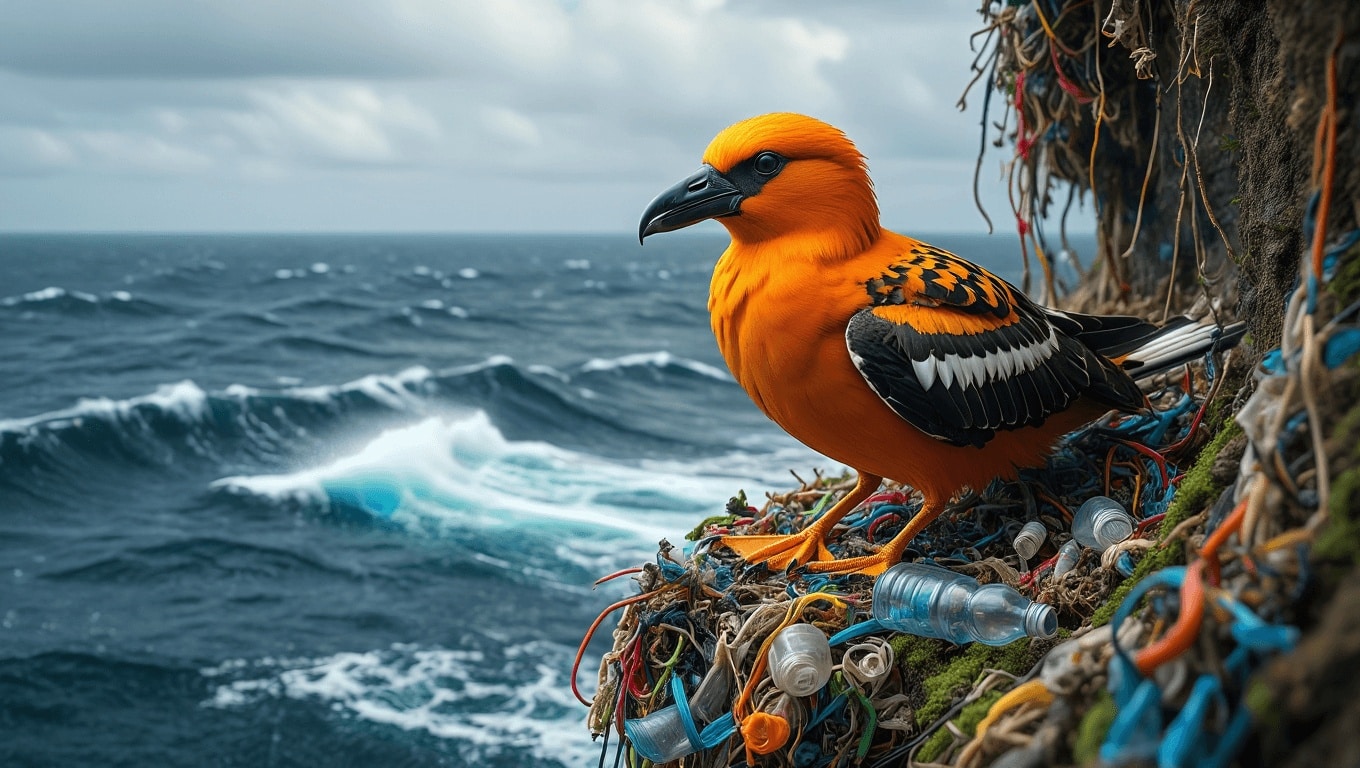In a revealing set of studies, researchers from Argentina’s National Scientific and Technical Research Council (Conicet), the National University of La Plata, and other institutions have highlighted a concerning environmental issue: the infiltration of plastic debris into local wildlife. The findings, published in the journals “El Hornero” and “Environmental Pollution,” uncover the extent to which birds and fish are ingesting and utilizing plastic, shedding light on the broader implications of human-generated waste on Argentina’s diverse ecosystems.
Plastic: Unwanted Guest in Bird Nests
Pay for 2 Months, Watch for 12 – The Rotation Strategy Explained
Peacock Streams The Office Deleted Scenes Nobody Knows About
Researchers have discovered that a significant percentage of bird nests contain plastic materials. The study focused on how birds are incorporating human waste, particularly plastics, into their nesting habits. This adaptation to an increasingly polluted environment is seen across various bird species, with some nests containing items such as plastic bags and synthetic fibers. These materials are not only unnatural additions to their habitats but also pose severe risks to bird health and chick development. The study provides a stark indicator of the level of pollution and its direct interaction with native species, showing how deeply environmental issues are impacting wildlife.
Microplastics: A Hidden Threat in Marine Life
Another alarming discovery concerns the presence of microplastics in marine ecosystems. This study demonstrates that these tiny plastic particles are not only consumed by fish but also transferred to birds through the food chain. Over 40% of anchovies in the study area were found to have ingested microplastics, which then find their way into the bodies of seabirds. This cycle of pollution highlights a concerning trend of persistent environmental contaminants moving up the food chain, affecting a range of species and posing broader ecological risks.
Details of the Microplastic Investigation
Disney+ Has R-Rated Films Hidden in the Adult Section
Tubi Just Added 12 Perfect-Score Movies – Completely Free
- The research team analyzed anchovies, a common prey for many marine birds, and found a significant presence of plastic fibers in their digestive systems.
- These findings were facilitated by advanced techniques such as chemical digestion, filtration, and microscopy, alongside FTIR spectroscopy to identify the types of polymers present.
- The study was conducted in the Rincón de Ajó Natural Reserve, a crucial habitat for numerous marine species.
Implications and Actions
These studies collectively underline the urgent need for strategies to mitigate plastic pollution. The researchers advocate for enhanced waste management systems and increased public awareness and education on sustainable practices. Highlighting the importance of such measures, they call for immediate action to curb the influx of plastics into natural habitats, proposing continuous monitoring and stricter waste disposal regulations to safeguard Argentina’s rich biodiversity.
By addressing these environmental challenges head-on, there is hope for reducing the impact on wildlife and preserving ecological integrity for future generations.
Similar posts:
- Which 5 behaviors in squirrels now suggest they might turn predatory in your neighborhood
- Nearly 80% facing poverty deal with environmental threats: global crisis alert
- Chicago River’s first public swim since 1927: this splash has serious implications for health, wildlife & legacy
- Paranthropus boisei: Did this hominid also use tools like humans?
- Brain activity during dreams: New findings reveal the mind never rests

Daniel Harris is a specialist journalist focused on the crossroads of breaking news, extraordinary history, and enduring legends. With a background in historical research and storytelling, he blends timely reporting with timeless narratives, making complex events and ancient myths resonate with today’s readers. Daniel’s work often uncovers surprising links between present-day headlines and legendary tales, offering unique perspectives that captivate diverse audiences. Beyond reporting, he is passionate about preserving oral traditions and exploring how extraordinary stories continue to shape culture and identity.

